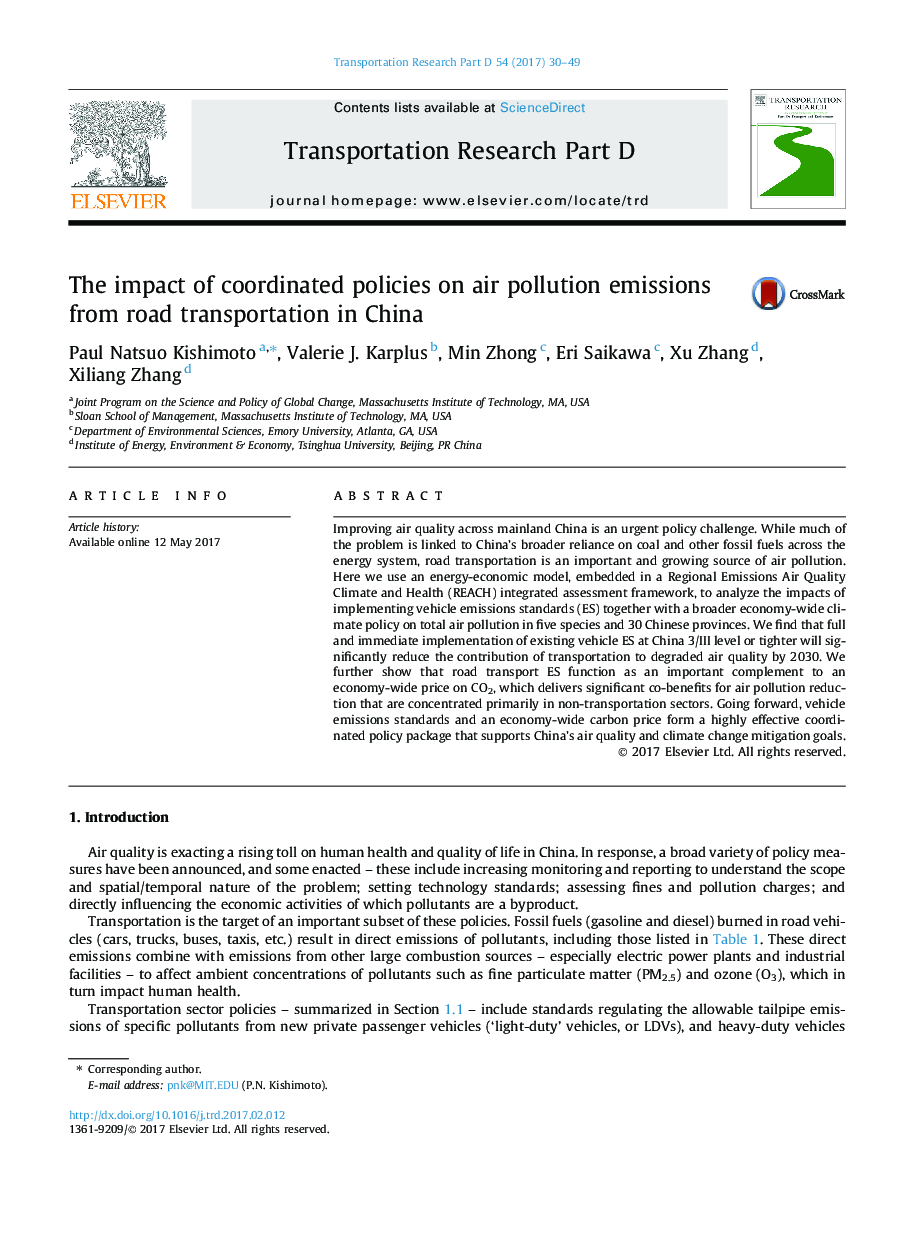| Article ID | Journal | Published Year | Pages | File Type |
|---|---|---|---|---|
| 5119218 | Transportation Research Part D: Transport and Environment | 2017 | 20 Pages |
•Road transport pollutant emissions are captured in a China energy-economic model.•Tailpipe & fuel standards greatly reduce transport’s projected share of pollution.•Pollution co-benefits of climate policy are comparatively small, within transport.•Emissions standards and climate policy can form a coordinated policy package.•Compliance with emissions standards is a key determinant of their efficacy.
Improving air quality across mainland China is an urgent policy challenge. While much of the problem is linked to China’s broader reliance on coal and other fossil fuels across the energy system, road transportation is an important and growing source of air pollution. Here we use an energy-economic model, embedded in a Regional Emissions Air Quality Climate and Health (REACH) integrated assessment framework, to analyze the impacts of implementing vehicle emissions standards (ES) together with a broader economy-wide climate policy on total air pollution in five species and 30 Chinese provinces. We find that full and immediate implementation of existing vehicle ES at China 3/III level or tighter will significantly reduce the contribution of transportation to degraded air quality by 2030. We further show that road transport ES function as an important complement to an economy-wide price on CO2, which delivers significant co-benefits for air pollution reduction that are concentrated primarily in non-transportation sectors. Going forward, vehicle emissions standards and an economy-wide carbon price form a highly effective coordinated policy package that supports China’s air quality and climate change mitigation goals.
